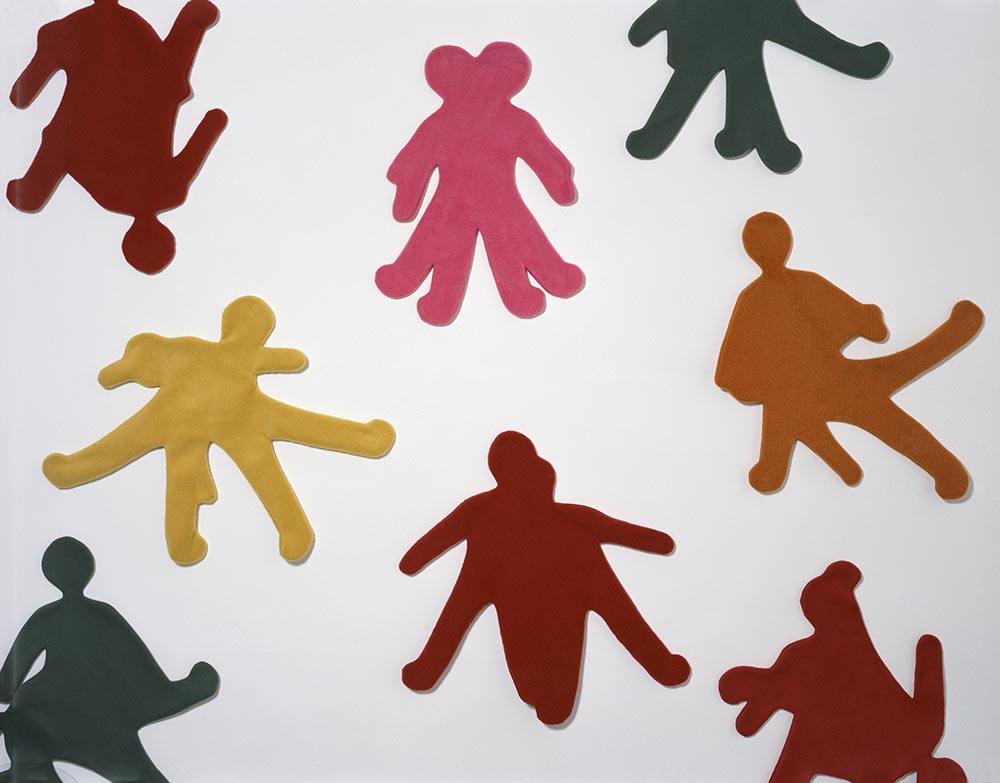Permindar Kaur
Pauline de Souza
Gymnasium. Berwick-on-Tweed, 3rd July – 8th August, 1998
English Heritage run a residential program for contemporary artists at the old military headquarters in Berwick. They stress it is not necessary for artists to create work relating to the history of Berwick but would definitely like to see some military reference materialising in the work. Kaur has not missed this point, while working in London and Berwick between October 1998 and March 1999, she eventually fills the Gymnasium with a previous commissioned work entitled Out of Breath and with The Way It Is commissioned by English Heritage. Kaur’s work has long been associated critically with the uncanny. This has become something of a cliché in commenting upon her works as in the writings in the Claustrophobia exhibition at the Ikon Gallery and more recently Niru Ratman’s introduction to the East London Gallery’s Out of Breath exhibition. Ratman places Kaur’s work into the post-colonial discourse. While Out of Breath finally manages to overcome the confining space of the East London Gallery and successfully interacts with the vastness of the Gymnasium it continues to remain obsessed with strife and interrelationships. A large plastic bed placed between fleece figures on opposite walls dominates the space. What is familiar about the bed is it similarity to Pure Thought 1(1995) by Nina Saunders. Kaur’s bed due to its transparency fails to materialise into a solid form whereas the swollen motif of Pure Thought 1 emerges into an immaculate firm structure. Both Kaur and Saunders transformed furniture pieces are obsessed by space that at times leaves no room for manoeuvre. Both reflect a destructive element, which acts upon a psychological edge of human fear. The taut plastic buttons in bed create some tension even though we are aware of that there is nothing inside the sense that something is contained remains. But Out of Breath is not about repression it does not fit into Julia Kristeva’s notions of abjection or notions of the uncanny. Instead the four yellow and fuchsia fleece figures on the surrounding walls Out of Breath is about spatial intuition and the function of signification.
It is easy to argue that the fleece war like figures work through the notion of mimicry by exploring Homi Bhabha’s critical theory that considers the ambivalence of colonial discourse. Where repetition referring to the similarity of objects, criticizes Lacan’s mirror image and destroys feelings of uniqueness. Superiority is no longer obtainable and mimicry as repetition annihilates authority. Pushing aside the political identity of Thatcherism and Blair’s cool Britannia the positioning of the fleece figures are unified as mirror images but retain a separate image. In this sense they are prototypes, they are signs whose meaning is based on a double articulation combing discrete elements. This does not mean they can be seen as a failure of uniqueness or authority but instead can be read as preconditions for endless exchange of selves. Contrary to repression play is presented as a a historical non-place of potential liberty. Play produces an acute and dramatic confrontation between the signifier and signified which lays bare the arbitrary nature of the symbolic order. The separation caused by language is given form though the physical splitting of the figures. Despite the colours of the fleece figures Kaur wants the white helmets and boots to represent pawns in chess. Amusingly, the plastic bed becomes the chessboard where the- deflated fleece figures on the walls have already acted out their war game. It is the physical action of play, which causes the figures to be breathless.
The characterisation of play is continued in The Way It Is. According to Kaur figures are detaching themselves from their shadows. While the figures remain mildly ironic, the work is nevertheless confined by aimless and isolated obsessions. They are similar to the figures she had produced for the 1997 Krishna, The Divine Lover exhibition but are more abstract. Each figure has its own distinct shape but share the same colours. It is possible to touch this work and Kaur’s understanding of the correlation of the visual with the tactile co-emerges with the skin/surface of the figures. At times the activity appears to be intense but there is no true sense of raw emotion rather scattered remnants litter the white gallery wall. Kaur’s tendency is to suggest the intolerable at a level tone causing the work to be subdued and does not overcome the problem of communication between the figures. The abstract figures imply a new direction for Kaur’s work and it would be interesting to see how the work develops as it overcomes the issues of domestic isolation, the uncanny, political identity and the dysfunctional aspects of childhood memories.
Pauline de Souza. ‘Permindar Kaur’ Berwick-on-Tweed Gymnasium. Berwick-on-Tweed, England. 1998
